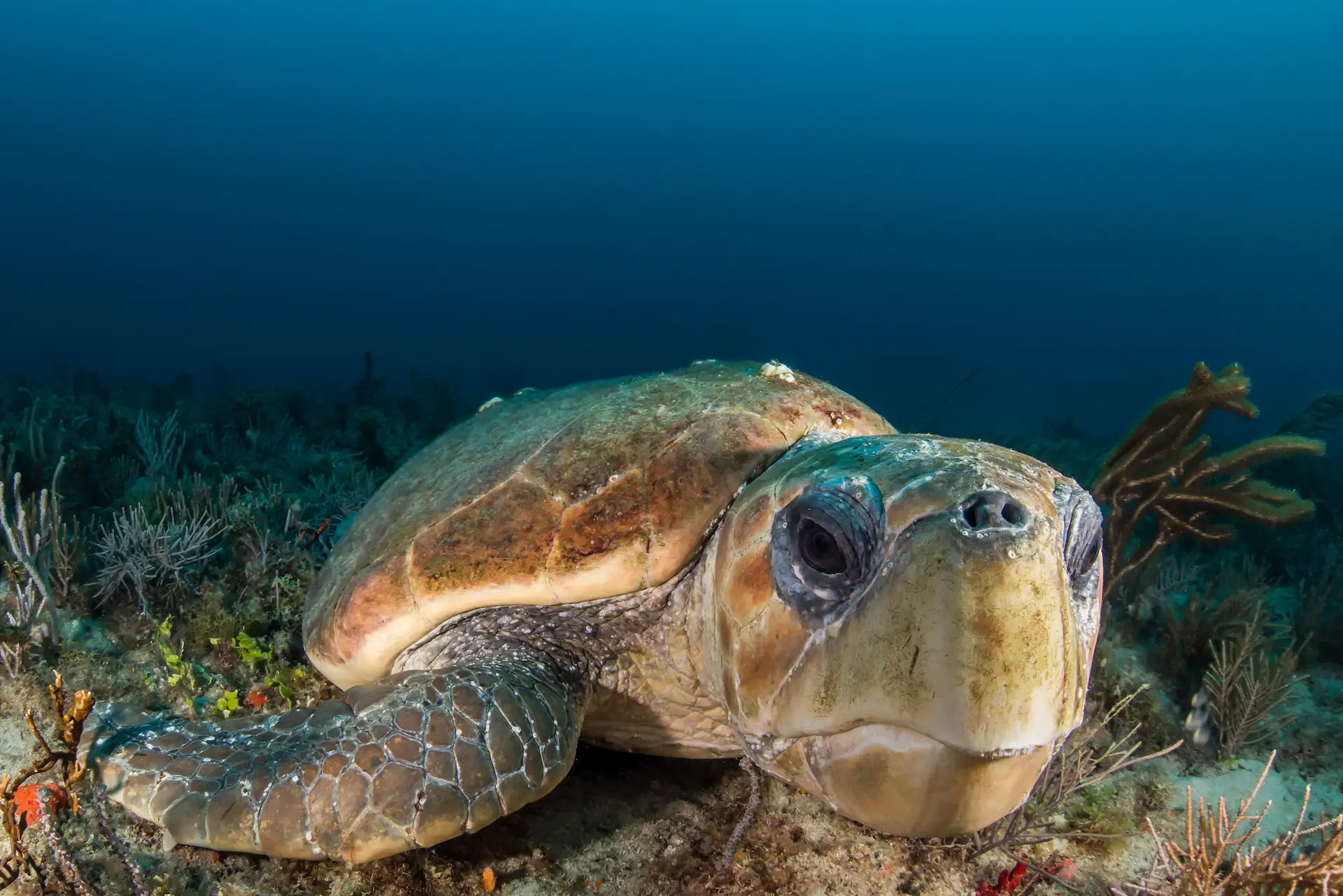
Wildlife Fact Sheet
Loggerhead Sea Turtle
Caretta caretta
About
Loggerhead sea turtles are the most widespread sea turtle species in the world, and the most abundant of all sea turtle species in the United States. You can recognize them by their reddish-brown carapace (upper shell), yellow underbelly and their strong jaws that they use to crunch through the hard shells of crustaceans and mollusks. The mouth of the loggerhead sea turtle is actually where they get their name! Some people think their massive head is as big and sturdy as a log.
Loggerhead sea turtles are a long-lived species and don’t reach sexual maturity until they’re 35 years old. When they’re old enough, loggerhead sea turtles will mate in coastal regions about every two or three years, and then make a massive migration to lay their eggs. Loggerhead sea turtles make their way back to the exact beach where they were born, also known as our “natal” beach. Loggerhead sea turtles climb onto the beach at night to lay four clutches of over 100 eggs each, and then head back to the ocean. Their eggs are vulnerable to predators and environmental factors. For example, the sex of their offspring is actually dependent on temperature! Warmer conditions will result in mostly female hatchlings, and cooler conditions will lead to more males.

Did You Know?
Loggerhead sea turtles are one of seven sea turtle species, including the leatherback, olive ridley, hawksbill, flatback, green and Kemp’s ridley.
Get Ocean Updates in Your Inbox
Sign up with your email and never miss an update.
Status and Conservation
Loggerhead sea turtles are world travelers, and make long migrations during breeding season to return to the beach where they hatched as a baby to lay their own eggs. Unfortunately, loggerhead sea turtles encounter a lot of trash and other dangers on their journey. Loggerhead sea turtles can get caught by fishermen, particularly shrimp trawlers, as bycatch or get entangled in abandoned fishing gear. This makes it hard or even impossible for loggerhead sea turtles to swim and can be fatal. Plastics are a huge problem too, especially for young turtles. For baby sea turtles, just half a gram—one one-thousandth of a pound—of ingested plastic can kill them. Loggerhead sea turtles can easily confuse plastic bags for one of their favorite foods—jellyfish. For their best chance at survival, humans need to work to keep plastics off their beaches and from entering the ocean.